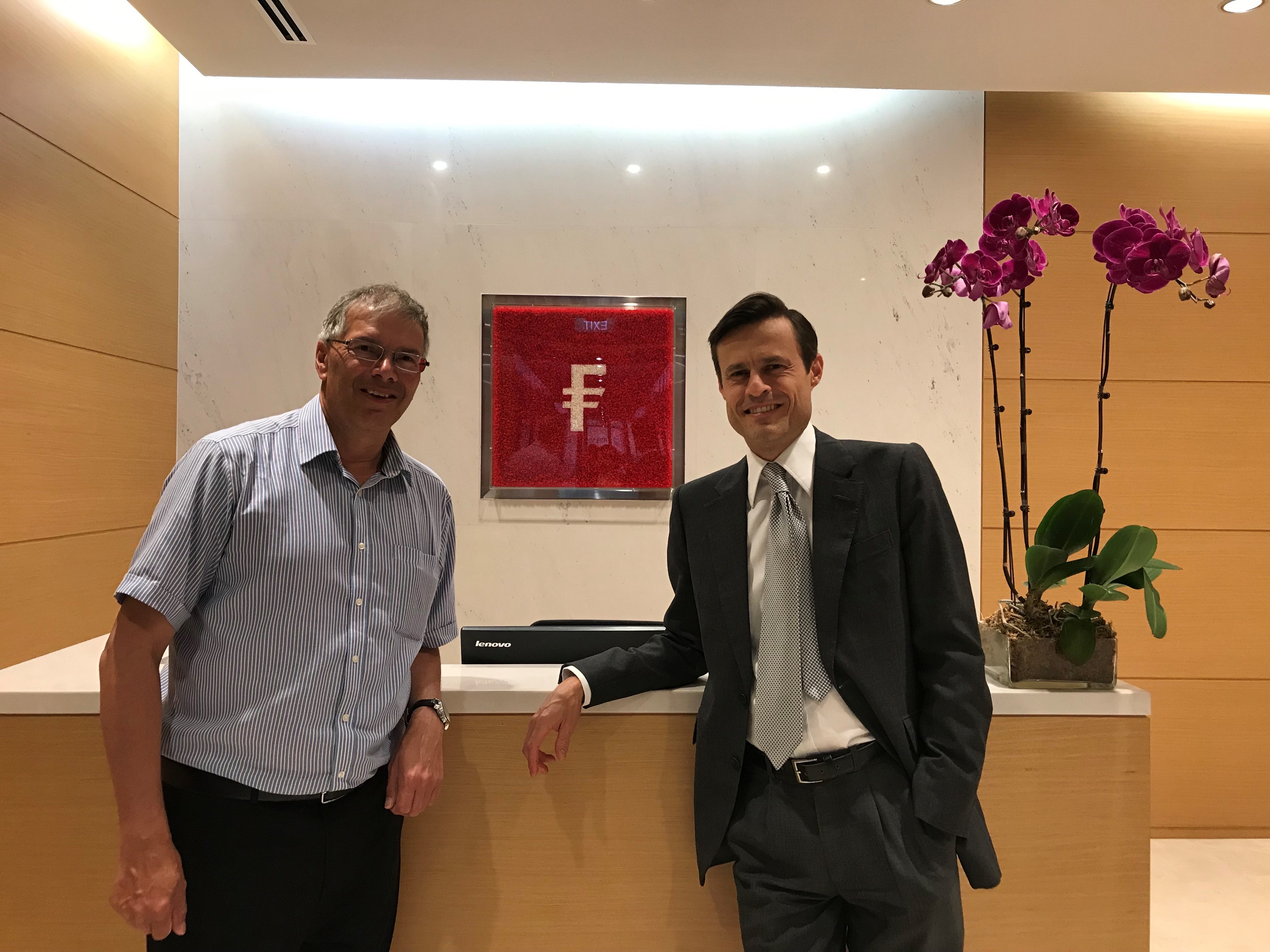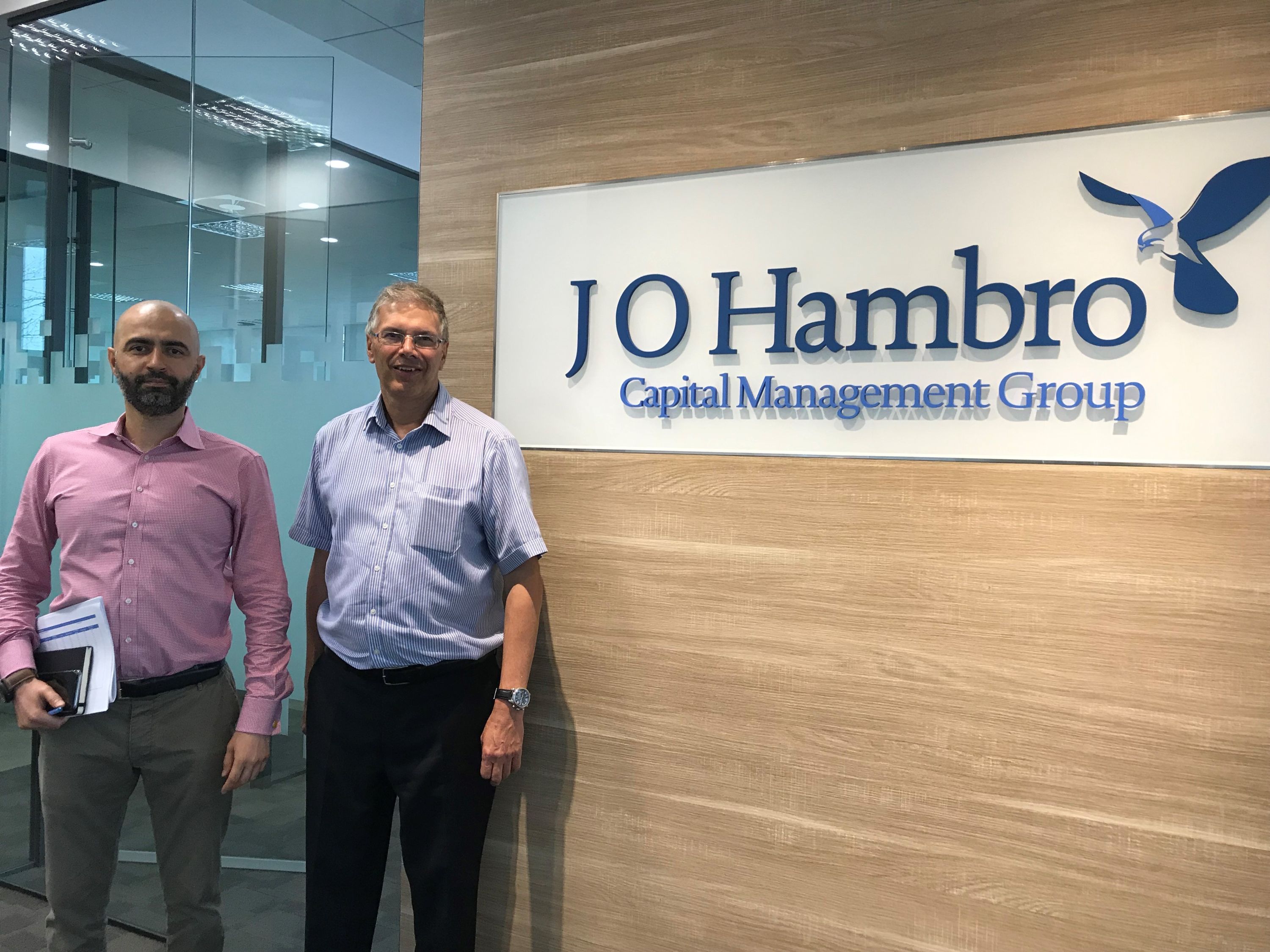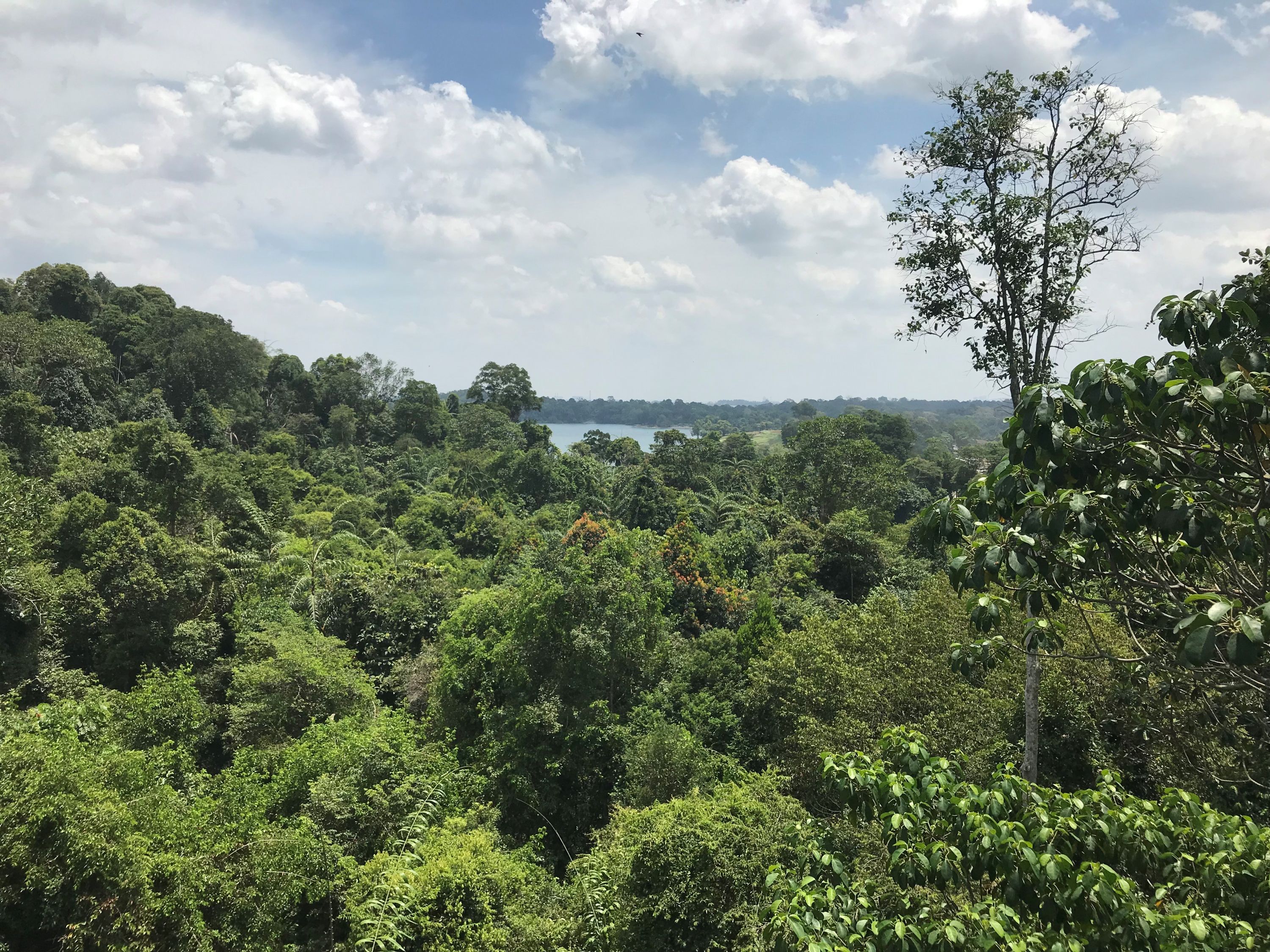31 Oct 2019
Part 2 of my trip to Singapore....from the dazzling lantern festival to illuminating management meetings to trekking in the equatorial rainforest.
The mid-autumn festival is the Chinese equivalent of the harvest festival celebrated in the UK. It falls on the 15th day of the eighth lunar month, which occurs between September and October and is often referred to as the lantern festival. As the festival is all about lunar appreciation, celebrations take place once the sun goes down, when the moon is said to be at its brightest. In Singapore, both Chinatown and the Marina Bay Gardens are lit up with brightly coloured lanterns. This festival was founded during the Song Dynasty more than 2,000 years ago when, according to Chinese legend, Chang’E drank the elixir of immortality to save the country from her ruthless husband and, in doing so, floated up to the moon to live forever. Legend has it that Chang’E blesses her worshippers with beauty, so people light lanterns in her honour that she can clearly see from the sky. This festival has evolved as a time to celebrate the moon, food, family and friends and was a true delight to experience.

The Martin Currie ALTU Strategy is managed quite differently from most funds in the Asia Pacific sector in that it has an absolute return mentality and takes an unconstrained approach to investment. The objective is not to deliver a return relative to a benchmark index, but in line with or ahead of nominal GDP growth in Asia. The ALTU Strategy is a concentrated, unconstrained portfolio of high-quality companies which takes governance, balance sheet and future earnings prospects into consideration. In order to reduce the risk of potential blow ups, Martin Currie uses the Sri Lankan firm, Amber, who assist companies by building out complex financial models, to provide exclusive, dedicated accounting diagnostic support for their asset management.
Some of the top performers for the fund this year have been AIA, the Pan Asian insurer and Hong Kong listed Tencent, the gaming and social network provider. A lesser known name, which has rebounded in 2019, is ST Engineering, a Singapore technology engineering business with interests in aerospace engineering, plane refurbishment and smart city and subway technology products. The type of low risk investment favoured by ALTU is Guangdong Investment, a Hong Kong utility water supplier with stock purchased at a 4.5% yield, which continues to grow at 6-7% p.a. Including dividends, the company has the potential to return 10-11% p.a. to investors. In India, both TCS and Infosys, Indian IT outsource names, have benefitted as Dollar earners and have seen an increase in revenues and profits. Historically, trade has been a driver of growth in the region and intra-regional trade has grown in importance, prior to the US trade dispute with China. Poor stewardship of capital in Asia has diluted shareholder value in many businesses and this fund is looking to translate the likely continued level of above average GDP growth in Asia into good returns for shareholders. The focus is on companies with a franchise that can genuinely grow and in ensuring that free cash flow matches profitability in these businesses.
The Goldman Sachs India Equity Portfolio, managed by Hiren Dasani, had suffered a tough 2018 as small caps, where the fund has generated excellent added value historically, came under pressure when there was some slowdown in the economy. The fund was also underweight to US$ earners, principally in the Indian IT sector. This year, despite the election victory of Modi, concern over future growth lead to a subdued first six months in the Indian stock market. Post-election there had been further signs of economic weakness, but the government has responded with stimulus measures, including significant reductions in corporate taxes. Furthermore, the pullback in inflation is allowing scope for the Indian central bank to cut interest rates, potentially setting the country up for a rebound in the growth rate in 2020. The stock market is now showing better performance, both on an absolute basis and relative to other Asian markets and there are signs that the Modi government will continue to put in place pro-business measures to ensure an economic recovery next year. This fund has a bias towards domestic Indian names and would stand to benefit from the upturn. The fund continues to be managed by a strong, well-resourced team and has the potential to deliver strong returns, albeit with above average volatility compared to more broadly based Asian regional mandates.
The Goldman Sachs Emerging Markets Equity Portfolio has seen a strong rebound in performance this year with excellent stock picking across several sectors. Hiren Dasani and Basak Yavuz co-manage the portfolio. The fund typically averages around 30% exposure in mid and small cap names and has delivered excellent added value in this part of the market due to the lack of analyst coverage. Some of the funds’ top overweight positions are to AIA Group, Ping An Insurance, Tencent, Hong Kong Exchange and Kweichow Moutai. This year’s strong relative performance has been driven by excellent stock picking, particularly in China and Brazil, together with the financials and consumer staples sectors. Hiren and Basak head an experienced team who have the skill set to continue to deliver added value, especially in mid and small cap names.
Chetan Sehgal, Managing Director of Emerging Markets Equities, has helped to restructure the approach that Franklin Templeton takes to large cap emerging market equities. Chetan was responsible for the small cap strategy in emerging markets, which has shown strong performance. The large cap team has now adopted a significant change in approach from a country analyst research process to one more focused on sector lines. Understanding stocks in the technology space has become more specialised and there is a need to grasp disruption across industries, brought about by internet and ecommerce models. There has also been a move away from a traditional value approach, which focused mainly on low price to book and low PE, to one where value has been re-defined as looking for sustainable earnings power at a decent price and putting a higher emphasis on stewardship of the business. There is now a defined split between the roles of the portfolio construction team and the analysts, with the analysts working on a common philosophy, so that their output can be assessed across different markets in a consistent manner. The analyst team cover 800-900 stocks in detail in their database, together with a lower level of coverage on another 500 names, and this includes both large and small caps. There are around 200-300 buy-rated stocks and around 100 of these appear in the TEMIT (Templeton Emerging Market Investment Trust) portfolio.
TEMIT is now run as a portfolio of sustainable businesses, focusing on companies that either have market leadership or are gaining significant market share. In technological hardware, TSMC, the global foundry business, and Samsung, with its dominance in memory chips, are both held in the portfolio. Chetan believes that both businesses have sustainable market leadership over the long term. TSMC has a technological lead and makes the processors for Apple iPhones and Samsung is the lowest cost producer of memory chips. In terms of internet platforms, Alibaba and Tencent are both benefitting from the greater share of GDP going to the Chinese consumer. The fund has a multi cap approach and, although there has been a period when large caps have outperformed small caps significantly, Templeton are present in 16 countries and the team of around 80 have the analytical resource to benefit when small caps become more popular. An example of an under researched small cap name in the portfolio is Naga World Corp, a casino stock operating in Cambodia and listed in Hong Kong, with a monopoly on casino licensing that is currently benefitting from the Chinese tourism boom.
The new investment process has resulted in a significant improvement in performance, delivered with reasonable levels of consistency over the last three years. One of the major benefits is that analysts now provide output in a common language with notes summarising the investment thesis/risk and an overview of positives for the business in terms of sustainability of the franchise, earnings power and value. The fund should continue to deliver above average returns from the region over the medium term.
I also caught up on the Templeton Emerging Markets Smaller Companies fund, a strong performer amongst its peers over the medium and long term. The Templeton Small Cap Strategy continues to be headed by Chetan Sehgal and has a flexible approach to valuation, with a focus on companies that have sustainable earnings power, but that trade at a discount to intrinsic worth. Both analysts and portfolio managers are drivers of ideas for this fund, with the team using the extensive local presence and network built up by Templeton on the ground in the emerging market universe. The portfolio is overweight in consumer discretionary, financials, healthcare and consumer staples, showing it is a play on domestic consumption rather than having a heavy emphasis on exporters. After the outperformance of large caps, small caps in the emerging market universe now trade at lower levels of valuation. At some stage, small caps are likely to catch up and this fund is well placed to benefit when this occurs.
The Fidelity Asia Pacific Opportunities fund has been an excellent performer since its launch and fund manager, Anthony Srom, has now built up an outstanding record in this concentrated portfolio, which typically holds 25-35 high conviction positions. The volatility of the fund has been controlled through careful monitoring of the individual stock names and by ensuring that there aren’t any unintended macro correlations in the portfolio. The manager of the fund is prepared to back his judgement but tries to do so in a risk-controlled way. Some of the top contributors over the past 12 months, where the weight in the portfolio is actively managed, include Kweichow Moutai, a Chinese spirit producer. At times it has held a 950bp position, but, after strong performance, the position has now been pulled back significantly. Moutai is the Communist Party of China’s national drink and part of the rally may be as a result of the 70th anniversary, which took place on the 1st October.

As the valuation buffer or cheapness of the stock versus consensus expectations has been closed, the portfolio’s exposure to this name has been trimmed. Another strong performer this year has been gold royalty Franco-Nevada Corp and a long-term winner for the fund is AIA, the Pan Asian insurer, that has benefitted from strong secular tailwinds, such as the growing middle class in the region wanting more protection and investment products. Anthony also invests in the China ‘A’ share market and Midea has been a strong performer with a focus on both domestic appliances and robotics, although after strong performance he has now pulled the position back. Other Chinese names that have been sold from the portfolio this year after strong performance include the premium soy sauce brand Foyshan Haitian and in the appliance market, Hangzhou Robam. This fund takes a differentiated approach to most in the region, being more concentrated and focused on manager best ideas, but the fund is managed in a way where, to date, volatility has been limited by strong portfolio diversification at the stock level. This type of fund is a useful satellite addition to the portfolios as it has the ability to add significant alpha versus benchmark indices.
JOHCM run a global mandate from Singapore, the Global Select Fund, which uses a quantitative approach focused on fundamentals, valuation and trend. After initial screening, fundamental research is carried out on stocks that screen well and the aim is to identify businesses where earnings revisions, return on capital, ESG ratings and balance sheets are trending up or improving. There is then further analysis on a sustainable level and work is carried out to consider the current valuation. The fund takes an equally weighted stock approach to portfolio construction, so at times can have a bias to mid caps, away from mega caps. The portfolio has benefitted from the strength of the technology sector and growth stocks in the market for much of the past three years. However, there is recognition that market leadership can change and decisive action is taken if deemed appropriate by screening signals. Top performers this year include New Zealand stock a2milk, a lactose-free milk producer and Newcrest Mining, the gold producer and in the US technology space, Cree and Intuit have been strong performers. This specialised approach has been successful, despite the potential volatility of performance in the short term.

The Aberdeen Asia Pacific fund has seen a pickup in performance and during a meeting with one of the fund management team, Christina Woon, it was explained that, following on from the merger with Standard Life, there has been some refinements around how research is conducted and a greater emphasis has been placed on looking for timeframes and potential catalysts with reference to the re-rating of stocks by the market. Incorporating “focus on change” elements in the research notes has helped improve the sell disciplines within the portfolio and re-organisation of some analyst responsibilities on a sector approach has been useful in certain areas.
Within the portfolio, the internal China ‘A’ share fund, managed by Nicholas Yeo, is still an outstanding performer as the domestic consumption story in China continues to thrive and is insulated from Trade War fears. CITS Duty Free Services have benefitted from rising middle class income and China is trying to bring back consumption from overseas through increased numbers of downtown duty-free shops. The stimulus measures in China have been focused on increasing domestic consumption rather than boosting fixed asset investment.
Domestic orientated exposure in the ASEAN region has also helped the portfolio, with names such as Bank Central Asia and Bank Rakyat in Indonesia. The fund has also added to exposure at HDFC Bank after that name sold off this year. Refinements to the process and decisive action have resulted in the fund having a strong 12 months of performance. With the force of the fund management and analyst resource in the region, the fund should be well placed to deliver above average returns going forward.
And so, after a busy week in Singapore and a Saturday hiking in the equatorial rain forest on the island, it was off to Hong Kong for another round of manager meetings.

Until next time...
Graham O'Neill, Senior Investment Consultant, RSMR
Looking for a whole host of informative, up-to-the-minute content from the fund rating experts? Click here to head to RSMR Connected.
This information is for UK Professional Advisers only and should not be given to retail clients.The value of investments and the income from them may go down as well as up and investors may not get back the amounts originally invested.
Rayner Spencer Mills Research Limited is a limited company registered in England and Wales under Company Registration Number 5227656. Registered office: Number 20, Ryefield Business Park, Belton Road, Silsden, BD20 0EE. RSMR is a registered trademark.